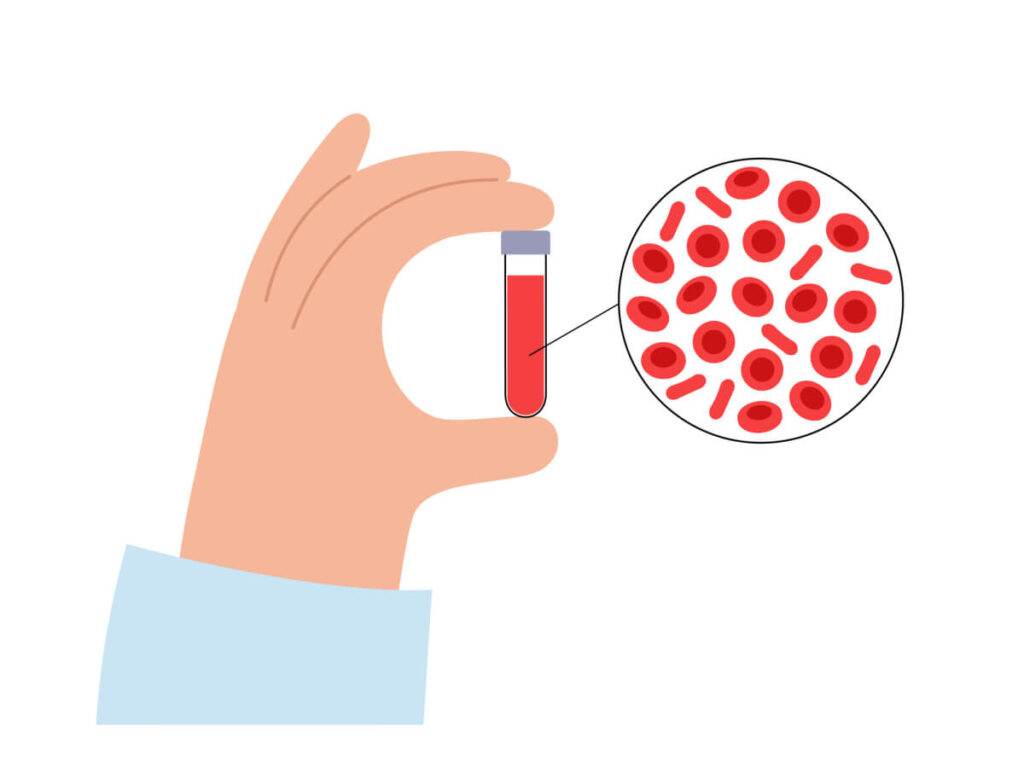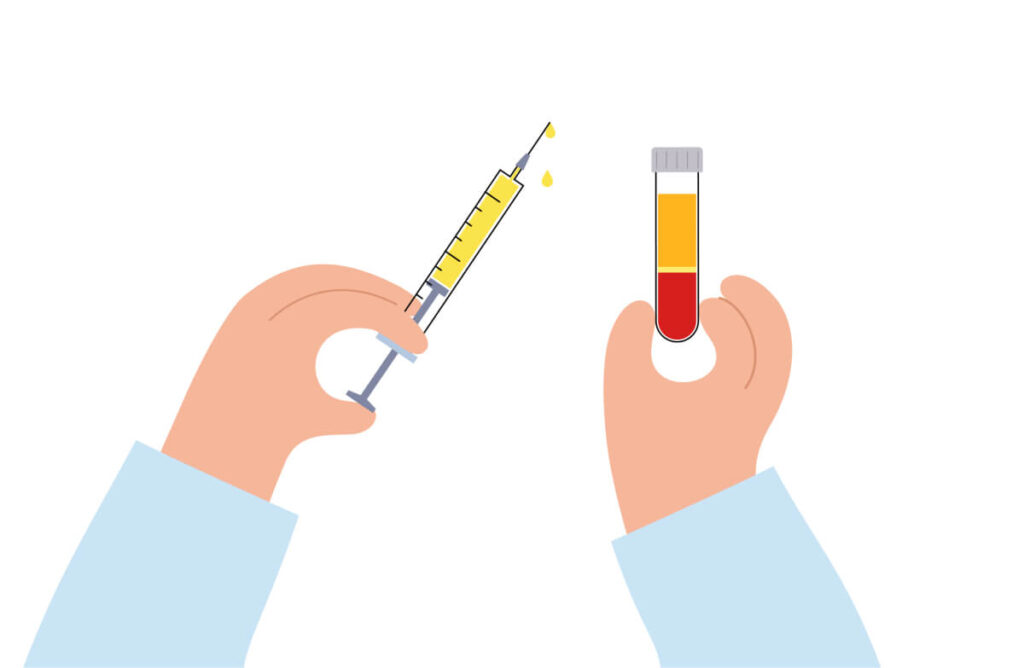Autologous platelet-rich plasma is a unique cosmetic treatment which allows the treatment of a wide array of disorders through extraction and preparation of a patient’s blood serum. Standardization is a very important aspect of the preparation method of this cosmetic procedure or in any aspect of patient care.
So should the vacuum in the tubes be released prior to centrifugation when preparing PRP? There’s no straightforward way to answer this because no centrifugation protocol includes this in the steps to perform extraction nor do they prohibit the technician to do so. However, it’s safer not to because the vacuum in the blood collection tubes avoids contamination of the contents of the tubes from occurring.
Why Vacuum Is Important In PRP Tubes
Tubes specially made for the extraction of blood for platelet-rich plasma preparation purposefully have a vacuum inside them to ensure accuracy and prevent mistakes that can affect the quality and effectiveness of the treatment.
1) Ensures That The Right Amount Of Blood Is Collected
The polypropylene tubes used for blood collection for use in PRP preparation are standardized and validated to collect a predetermined amount of blood samples from the patient. Vacuum enables this standardization of the tubes and also allows multiple blood samples to be drawn in a single extraction.
2) Avoids Contamination
Meanwhile, the vacuum inside the tubes avoids contamination from getting into the blood sample by lessening the direct interaction of blood with the environment. This also reduces the health risk to the one extracting blood, since communicable diseases that may be present from the blood may pose a hazard to their health.
Components Of The PRP Tube

PRP tubes are especially designed to cater to the processes that the extracted blood goes through during the preparation of platelet-rich plasma. While other tubes may contain other additional features, the following are the basic components present in every PRP tube:
1) Separation Gel
The separation gel helps maintain the integrity of the platelet pellet to be extracted, in that it reduces the likelihood that other blood components such as red blood cells and white blood cells be included in the pellet. Separation gel thus ensures the purity of the PRP to be prepared by preventing other components other than platelet to be included in PRP.
2) Anticoagulant
Anticoagulants are an important component of the PRP tube as they prevent the formation of blood clots and the subsequent activation of platelets from occurring. They also maintain the integrity of the form and function of the platelets contained in the tubes. Choosing the right anticoagulant is then vital to ensure also the purity of the PRP to be prepared as it helps in the maintenance of the integrity of the platelets.
Tips In Selecting The Best PRP Plasma Preparation System
Selecting the best PRP plasma preparation system entails choosing the design that can produce platelet-rich plasma with the most number of platelet concentrates, such that a high concentration of platelets can be harvested in a single draw. Make sure that the amount of platelet yield passes the platelet dose threshold to ensure that the PRP will be effective.
The design should be able to minimize the unintended extraction of red blood cells and neutrophils (note that monocytes and lymphocytes are desirable for PRP as they can help platelets in exerting their effects on the healing process). It should also be a closed system, in that the PRP should get in contact with the environment as little as possible to avoid contamination. After all, the purity of PRP is important for it to work.
Cost should also be factored in the equation, too. The cost here doesn’t merely refer to the cost of the preparation system but the pre-treatment cost of the disposable kit, the cost of the equipment and the kit, and the opportunity cost.
Steps In Preparing PRP
The first step in preparing PRP is extracting whole-blood samples from the patient’s peripheral blood supply using a butterfly needle. The collected blood sample will then undergo a centrifugation process in which the components of the blood are divided into red blood cells, white blood cells, and platelets.
Upon separation of the components, a syringe with an 18 G long needle will then be used to aspirate the serum. When all of the serum has been aspirated, the PRP is then ready to be injected into the patient.
Another method of preparing PRP is also suggested in a study, in which a double centrifugation step is suggested to be done at 280 g each in separating the platelet pellet from other blood components.
According to this study, this method of preparation is cost-effective in that it doesn’t use sophisticated equipment and disposables specific only for PRP use. Upon processing, the PRP was then used in the study for wound healing purposes.
The Science Of PRP Preparation

To obtain platelet-rich plasma with its growth factors such as platelet-derived growth factor and vascular endothelial growth factor, the whole blood sample collected from the patient must undergo differential centrifugation. Various techniques regarding PRP preparation are developed, such as the following:
1) Platelet-rich Plasma (PRP) Method
The platelet-rich plasma method works by centrifuging whole blood (obtained via venipuncture from the patient) twice, with the first being a softer spin while the second is centrifugation at a higher speed. After the first spin, the whole blood separates into 3: an upper layer, a middle buffy coat layer, and a bottom layer made up of RBC.
The upper layer and buffy coat layer are then transferred into another sterile tube and subjected to a faster spin. After this step, the upper layer is now a platelet-poor plasma which is then discarded, while the lower third of the plasma will be homogenized with the platelet pellet to form the platelet-rich plasma.
2) Buffy Coat (BC-PC) Method
The buffy coat method works by centrifuging whole blood (collected via venipuncture from the patient) which will separate it into plasma, red blood cells, and a middle layer called the buffy coat which contains the white blood cells and the platelets. The plasma will then be discarded while the buffy coat layer will be transferred in another sterile tube to be subjected again to centrifugation.
3) Apheresis Technique
The apheresis procedure works by directly withdrawing blood from the patient using the apheresis machine then separating it into the blood components. Platelets will then be isolated and removed from the body while the other blood components will be brought back to the body.
Factors Affecting How Much PRP Can Be Produced From The Preparation
The yield of PRP can be influenced by various factors in the steps of PRP preparation, such as draw of blood, centrifugation, temperature, anticoagulants, and activation of PRP. Take these into account when undergoing your treatment and discuss these things with your provider to take the necessary steps for a successful procedure.
1) Draw Of Blood
Depending on the extent of injury or the desired cosmetic procedure, the amount of blood that may be drawn for PRP preparation may be 20 to 60 mL. Large bore needles (>22) should be used to draw blood to avoid platelet activation and blood draw must be done swiftly to avoid decreasing the platelet count.
2) Centrifugation
Centrifugation speed is an important aspect of PRP preparation. Very high speeds may lead to damage in the morphology and function of the blood cell components while very low speeds may risk not separating the serum from the other components of the blood.
Centrifugation time was shown to have no correlation with platelet concentration. However, this study still recommends increasing centrifugation time to allow more growth factor concentration to be included in the PRP, particularly vascular endothelial growth factor (VEGF).
3) Temperature
It’s important to make sure that you operate PRP preparation at cold temperatures to avoid premature platelet activation. It is said that the optimal temperature for platelet recovery ranges from refrigerated temperatures of 12°C to 16°C.
4) Anticoagulants
According to a study, acid citrate dextrose (ACD) and citrate-theophylline-adenosine-dipyridamole (CTAD) are the optimal anticoagulants because they’re able to maintain the viability of platelets better than ethylenediaminetetraacetic acid (EDTA), which can adversely affect the platelet volume and platelet counting.
5) Activation of PRP
Exogenous factors (meaning not from the body) that can lead to the activation of PRP include thrombin, calcium chloride, and mechanical trauma. Collagen found in soft tissues may also be used as natural activators and thus exogenous factors need not be added if PRP is to be used in soft tissues.
Regardless, no consensus yet exists as to whether or not to activate platelets first via the mentioned factors to maximize the effectiveness of the platelet-rich plasma.
Tips In Maximizing PRP Yield

Maximizing PRP yield entails maximizing platelet count and platelet concentration on the platelet-rich plasma by striving for the standardization of the processes to better control the factors discussed previously.
A study has suggested that the optimum yield of PRP can be derived through 900g x 5 minutes and 1000g x 10 minutes, respectively, for the 1st and 2nd centrifugation step at a refrigerated centrifuge. The formation of fibrin clots should also be avoided by inverting the PRP tubes 5 to 10 times to allow the optimum contact between anticoagulant and blood.
Safety Practices When Centrifuging
The use of centrifuge has many clinical applications but it also poses hazards to the health of the one operating it, such as the following:
- Physical hazards – refers to the possible hazards brought by malfunctions in the rotors of the centrifuge.
- Exposure hazards – refers to the possible inhalation of aerosolized biohazardous materials such as microorganisms that may cause communicable diseases.
It’s thus important for any health care professional to observe centrifuge safety such as the following:
- Wear complete and proper personal protective equipment (PPE) when operating the centrifuge.
- Don’t leave the centrifuge until you’re certain that the centrifuge is running smoothly and without any other incident.
- Listen for creaks or other sounds that may be indicative of the possibility of the centrifuge not being balanced.
- Use only the centrifuge within specified mass and speed limits to avoid rotor failure.
- Open only the centrifuge when the rotor has stopped spinning. Don’t force the rotor to a stop by using your hand.
- Always check for leaks or spills after use. Properly disinfect the leaks or spills.
- Discard tube in proper biosafety disposals.
PEP As A Ready-Made Alternative To PRP
Platelet-rich plasma, an example of regenerative medicine, undergoes many processes before being put to use to address the patient’s concerns. There are also many factors that affect the preparation of PRP that makes it hard to standardize the process (in fact, different authors of clinical trials even use different centrifugation speeds).
Similar to PRP that contains growth factors such as platelet-derived growth factors and vascular endothelial growth factor, PEP also contains factors that help stimulate the healing process of the body, such as fibroblast growth factor (bFGF), which is known to stimulate cell proliferation, and copper peptide, which has antioxidant properties.
PEP is a good alternative to PRP that provides the same benefits as PRP without the hassle of undergoing all of these processes. In contrast to PRP, PEP can be bought ready-made from FACE Med Store then applied to the patient’s area of concern.
Like PRP, PEP can be used synergistically with other processes such as microneedling. They both can help in skin rejuvenation and skin moisturizing. However, what sets PEP apart from PRP is that since PEP is topically applied, it also eliminates the risk of the side effects from PRP injections brought by the trauma of injecting needles into the skin.
Get PEP Factor Products and Other Medical Solutions At FACE Med Store
Vacuum in PRP tubes is as important as other components of the tubes such as separation gel and anticoagulant. The vacuum helps in reducing the risk of contamination so it’s advisable not to remove them prior to centrifugation.
You don’t have to think of these considerations in the preparation protocols when you opt to use PEP instead of PRP. You can use PEP immediately for your patients in complementary with other treatment modalities. Get PEP Factor now only at FACE Med Store and enjoy hassle-free medical solutions to your conditions. Contact us now at (800) 770-9083 or browse through our website to see more of our products.
Learn More: Does The Addition Of D/P MPs To PRP Result In Better Hair Growth?






